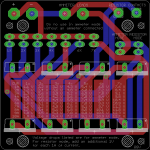I just got through reading the older DIY dummy load thread, but didn't see where the design ever got updated. The DIY vesion, along with the current one availble at SL, seem limited to 1 amp draw. I would like an updated version that can handle the latest high power drivers / L diodes. That currently being 3.4 amps? I have a Fluke meter that can read up to 10 Amps max and was considering using that inste4ad og the drop resister. The reason being the added complacation of needing a different Ohm valve due to the additional current draw. Is that right? Changing the ohm valve then prohibs a quick easy translation from Mv to MA.
Thought on that? For the Diode I was thinking about using a 4 amp diode in a TO-220 package and mounting them on a long heat sink? Would these work?
C3D04065A - CREE C3D04065A - SIC SCHOTTKY DIODE, 4A, 650V, TO-220 | Newark element14 US
Is there better options? Why hasn't anyone updated the older design?
Thought on that? For the Diode I was thinking about using a 4 amp diode in a TO-220 package and mounting them on a long heat sink? Would these work?
C3D04065A - CREE C3D04065A - SIC SCHOTTKY DIODE, 4A, 650V, TO-220 | Newark element14 US
Is there better options? Why hasn't anyone updated the older design?
Last edited:







